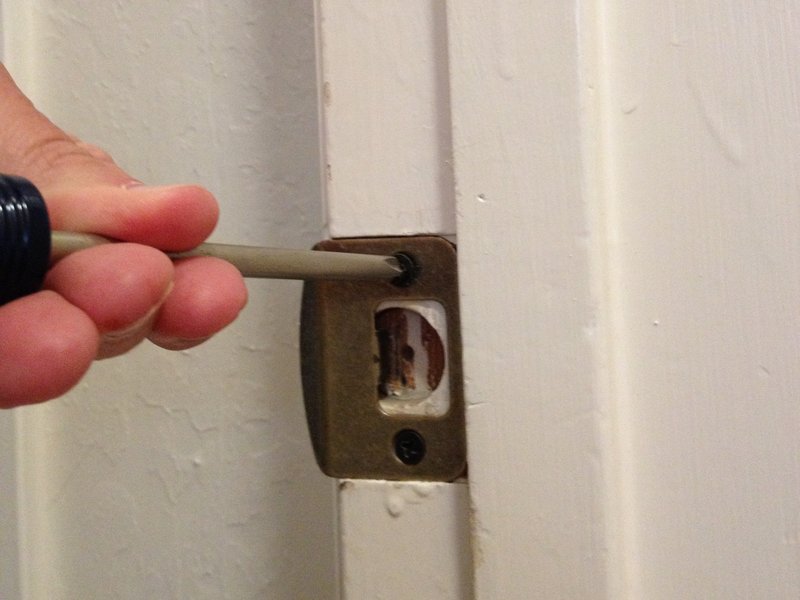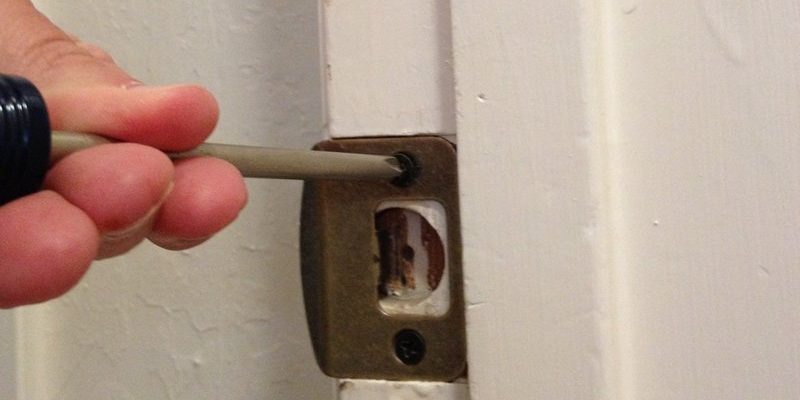
A rattling door latch can be caused by several factors—loose screws, worn-out parts, or misaligned components. The great news is that it’s usually a simple problem to tackle, and you don’t need to be a handyman to get it done. Whether it’s a front door, a back door, or even a closet, having a secure latch is essential for both safety and comfort. In this guide, we’ll walk through everything you need to know to fix that rattling latch so you can enjoy the quiet again.
Understanding Why Your Door Latch Is Rattling
Before diving straight into the fix, it’s helpful to understand what might be causing your door latch to rattle. You might wonder if it’s a simple matter of wear and tear or something more significant. Typically, the issues fall into a few categories:
- Loose screws: Over time, screws that hold the latch and strike plate in place can become loose. This is one of the most common reasons for rattling.
- Wear and tear: Everyday use can wear down the latch mechanism itself, leading to gaps between the latch and the frame.
- Misalignment: If the latch or strike plate isn’t positioned correctly, it can create unnecessary movement when the door is closed.
Understanding this helps because it allows you to focus your efforts on what might be causing the problem instead of guessing. Think of it as diagnosing a minor illness before jumping to conclusions about needing surgery.
Gathering Your Tools
Now that you have a grasp of the potential culprits, let’s talk tools. You don’t need anything fancy, and chances are, you already have most of what you need at home. Here’s a simple list to get you started:
- Screwdriver: A Phillips or flathead screwdriver, depending on your latch screws.
- Tape measure: To check for misalignment and ensure everything is fitting just right.
- Wood shims: Handy for adjusting the door alignment if you find it’s off.
- Lubricant: A little bit of silicone spray or graphite can help smooth any sticking parts.
With these basic tools on hand, you’ll be ready to tackle that rattling latch without a hitch. Honestly, having the right tools makes the process feel less like a chore and more like a fun DIY project!
Step-by-Step: Tightening Loose Screws
The first step in fixing a rattling door latch is often to check for loose screws. Here’s a simple breakdown of how to do this:
1. Inspect the latch: Look closely at the latch and the strike plate. Do you see any screws that look like they could use some tightening?
2. Use your screwdriver: Grab your screwdriver and carefully tighten any loose screws. Make sure not to over-tighten, as that can strip the screw holes.
3. Check the fit: After tightening, close the door and see if the rattling persists. If it does, there might be another issue at play.
Tightening screws is straightforward, but it’s a critical first step. You might be surprised at how much difference this simple action can make.
Adjusting The Strike Plate
If tightening screws doesn’t solve the problem, it’s time to look at the strike plate. This is the metal piece that the latch clicks into when the door is closed. Here’s how to adjust it:
1. Check alignment: When you close the door, does the latch line up exactly with the hole in the strike plate? If not, that’s likely your problem.
2. Move the strike plate: Loosen the screws holding the strike plate in place. Gently shift it up, down, or sideways until it aligns perfectly with the latch.
3. Tighten and test: Secure the strike plate again and close the door to test if the rattling has stopped.
Adjusting the strike plate can be a game changer. It’s like putting on a pair of shoes that finally fit—everything just falls into place.
Replacing Worn-Out Parts
Sometimes, if a latch has seen better days, it might be time to replace it. Worn-out parts can cause the latch to rattle and won’t resolve with simple adjustments. Here’s how to approach this:
1. Remove the latch: Use your screwdriver to take out the screws holding the latch mechanism. Keep track of them—don’t want to lose any!
2. Check for damage: Inspect the latch and its parts closely. If you see cracks, breaks, or significant wear, it’s time for a new one.
3. Purchase a replacement: You can find door latches at local hardware stores or online. Just make sure you get one that matches your door’s specifications.
4. Install the new latch: Follow the manufacturer’s instructions to install the new latch. Make sure everything lines up properly before tightening screws.
Replacing worn-out parts may sound daunting, but it’s a straightforward process. Plus, the peace of mind you’ll gain from having a reliable latch is always worth it.
Lubricating The Latch Mechanism
Even after tightening screws or replacing parts, your door latch might still rattle. In that case, lack of lubrication could be the issue. Here’s how to give it a little TLC:
1. Apply lubricant: Using silicone spray or graphite, lightly coat the latch and its moving parts. This helps it glide smoothly instead of rattling around.
2. Wipe away excess: Use a cloth or paper towel to clean up any excess lubricant. You don’t want it dripping everywhere!
3. Test it out: Close the door to see if the rattling has improved after lubrication.
Sometimes, it’s the little things that make a big difference. A well-lubricated latch can work wonders for its performance.
Final Checks and Tips
After you’ve gone through the steps to fix the rattling latch, it’s good practice to do some final checks.
1. Consistent testing: Keep testing the door after each adjustment. This ensures you catch any lingering issues right away.
2. Consider the door frame: If the door frame is warped or out of alignment, this could contribute to rattling. In that case, shimming or adjusting the hinges might be necessary.
3. Regular maintenance: Make checking and lubricating your door latch a regular routine. A little upkeep can prevent future problems.
By taking these steps, you not only solve the rattling issue but also maintain the integrity of your door’s function over time.
In conclusion, fixing a door latch that rattles in its frame can be an easy and satisfying task. With the right tools and a few straightforward steps, you can eliminate that annoying noise and enjoy a quieter home. Whether it’s tightening loose screws, adjusting the strike plate, or even replacing parts, now you have the knowledge to tackle this common problem head-on. So grab your tools and get started—your peaceful, quiet space awaits!
